Etiolation is the exclusion of light to plant tissue. New growth lacks chlorophyll therefore stem and leaf color is white to yellow.
Difficult-to-root cuttings often show improved rooting after etiolation.
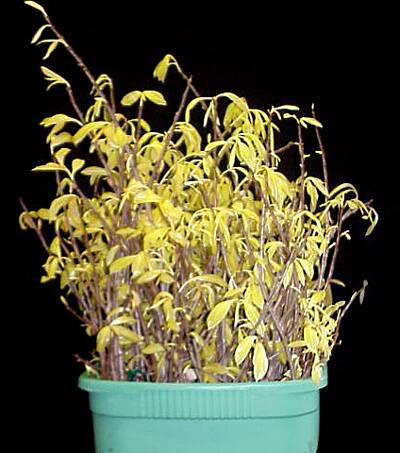
Cut branches of paw paw (Asimina) being etiolated for cutting propagation.
The entire stock plant can be covered with black plastic to exclude light as new growth emerges.
After etiolation, cuttings are removed from the plant and rooted under mist.
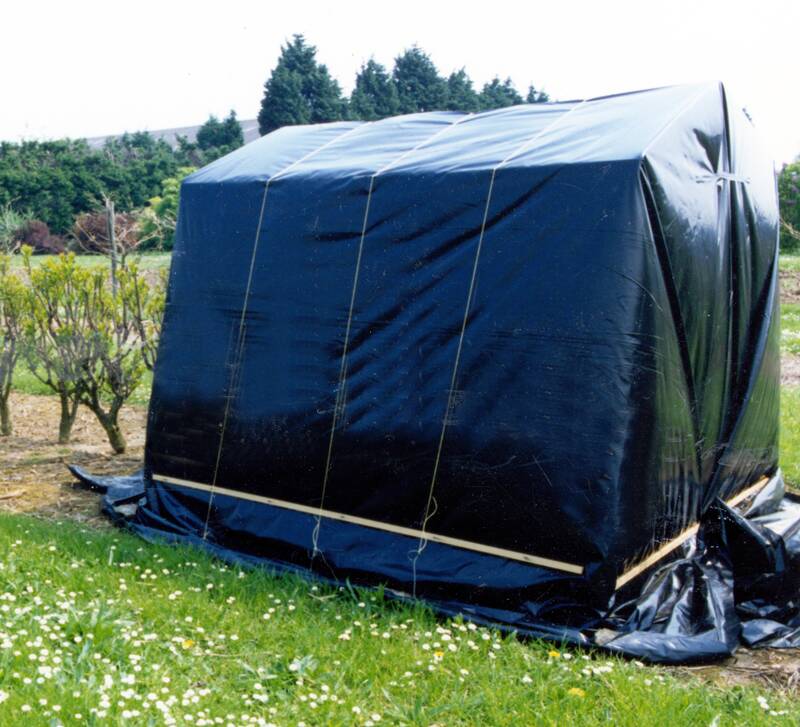
Black-out tents can be used to cover stock plants to generate etiolated stems. Image courtesy of B.H. Howard.
Etiolation can have dramatic effects of difficult-to-root woody plants.
However, the process is can be labor intensive and is only commercially viable on valuable cultivars.
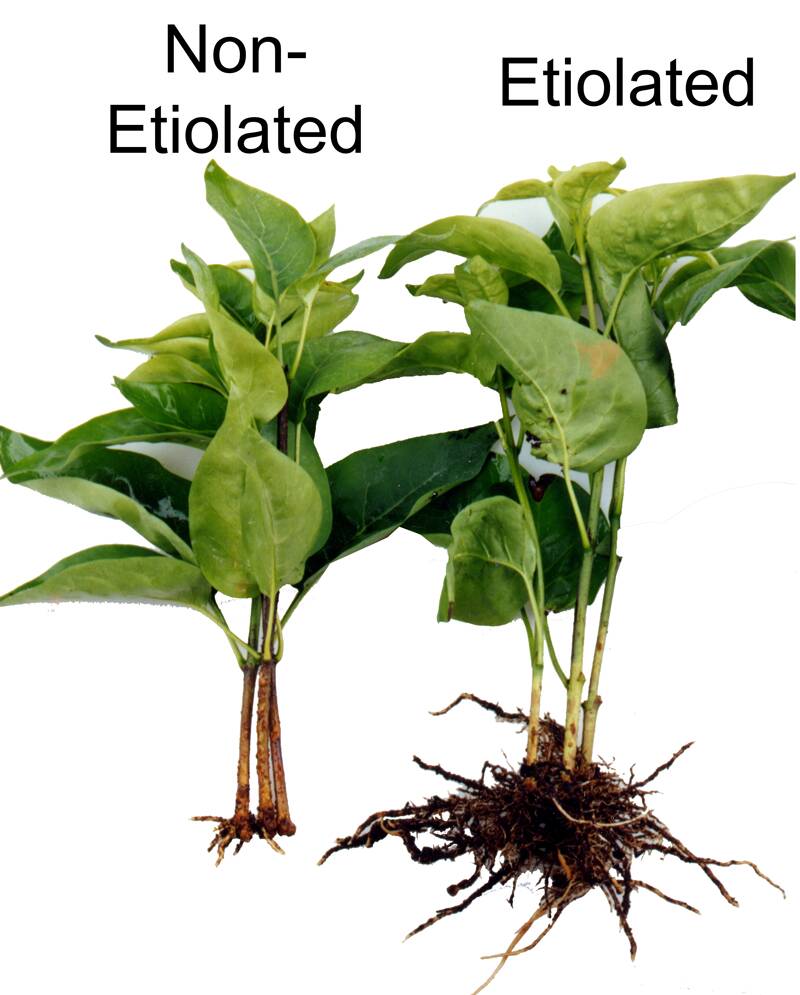
The impact of etiolation on a difficult-to-root lilac cultivar. Image courtesy of B.H. Howard.
Banding is a localized form of etiolation that aids rooting in some hard-to-root cuttings.
It involves placing a self-adhesive black (opaque) band around the base of the stem while it is still attached to the stock plant to exclude light.
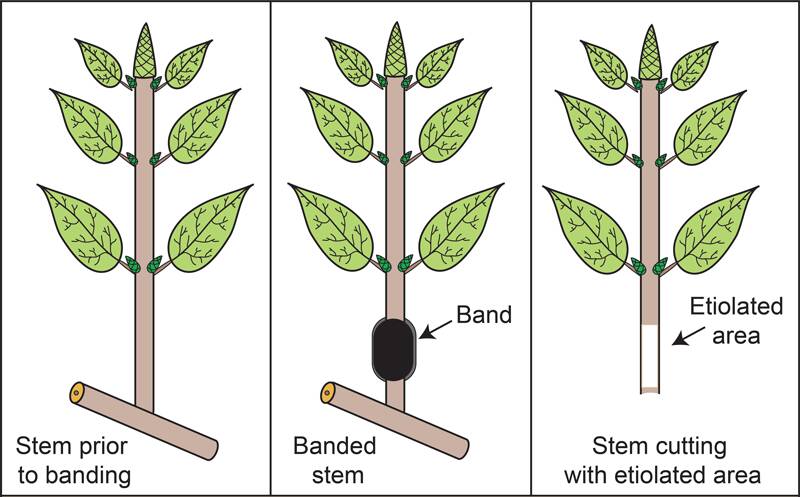
Cartoon depiction of banding a stem to create an etiolated area on the cutting.
Localized etiolation uses banding materials such as black tape or black Velcro.
It takes about four weeks to etiolate the stem.
After etiolation, cuttings are removed from the plant and rooted under mist.
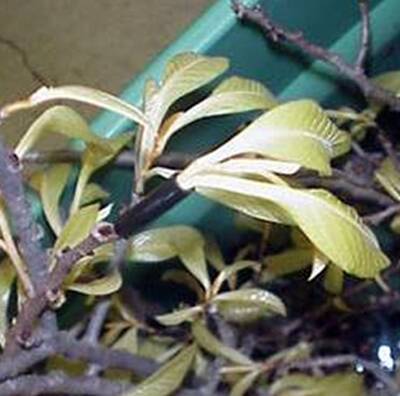
Paw paw stem covered with black tape.
After etiolation, cuttings are removed from the plant and rooted under mist.
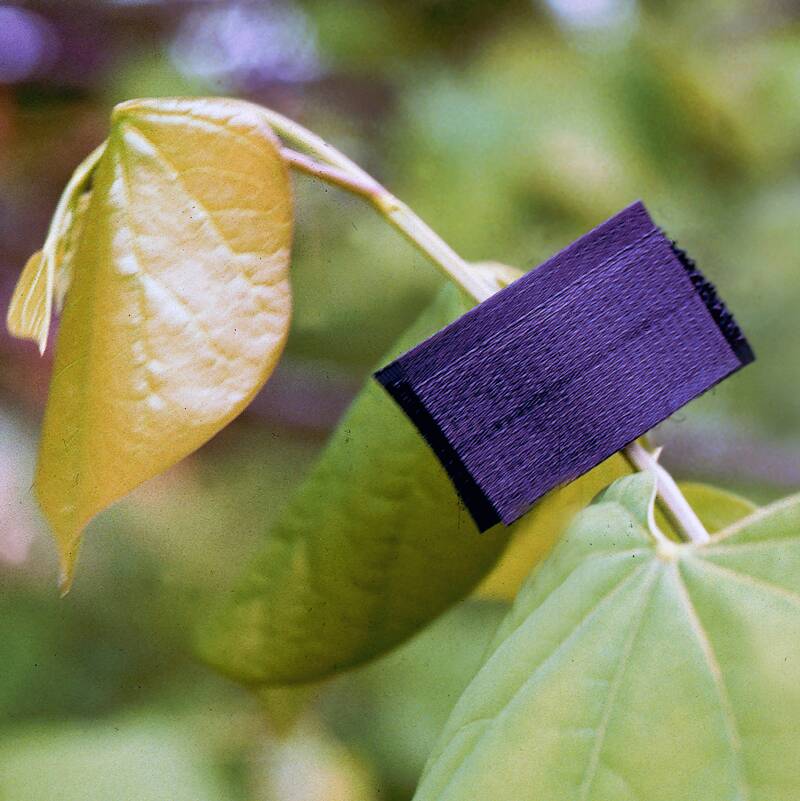
Redbud stem covered with a Velcro strip.


